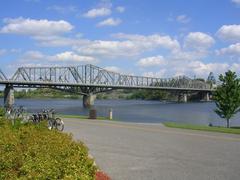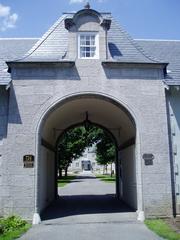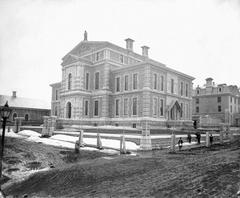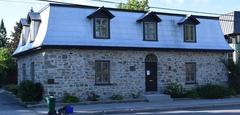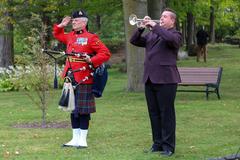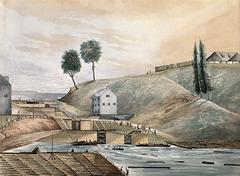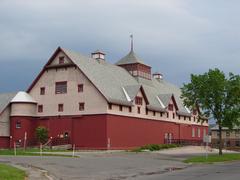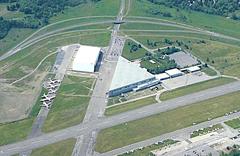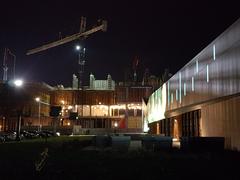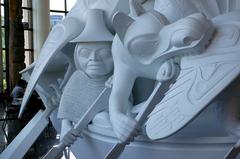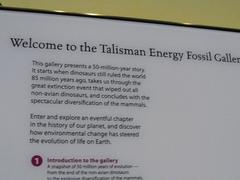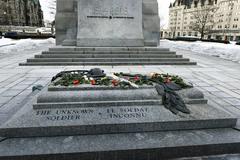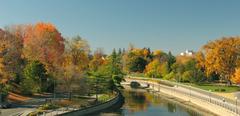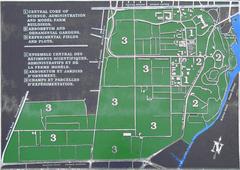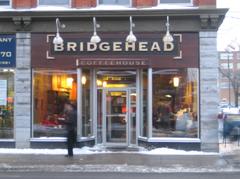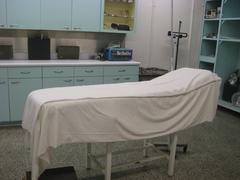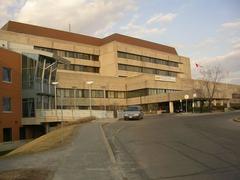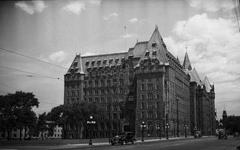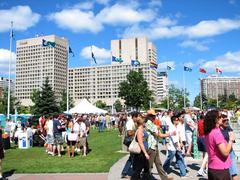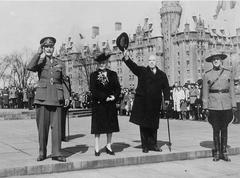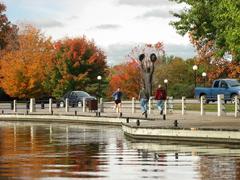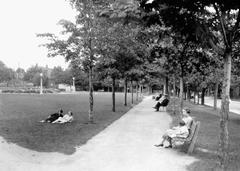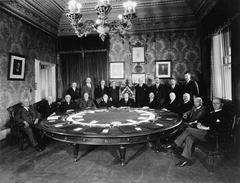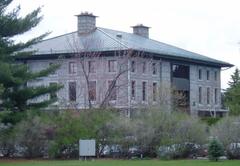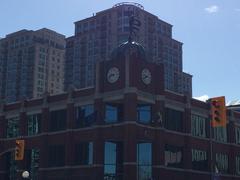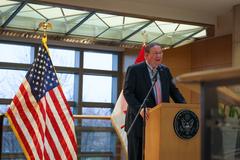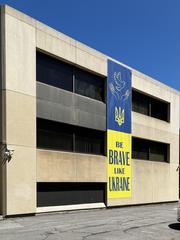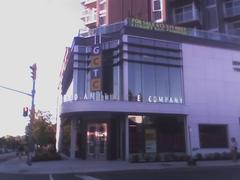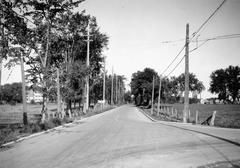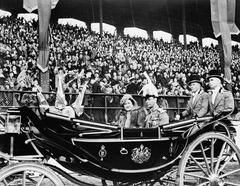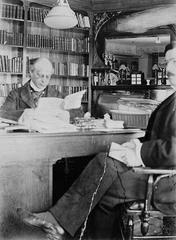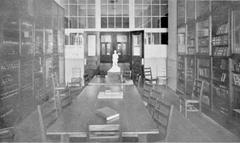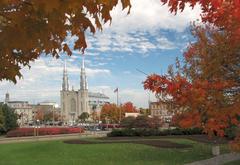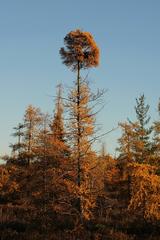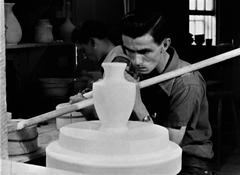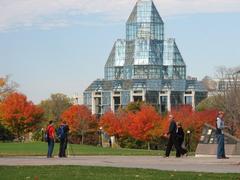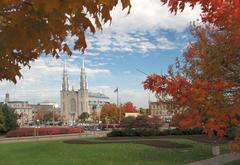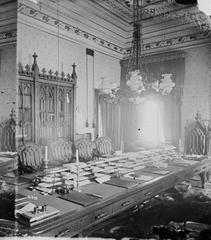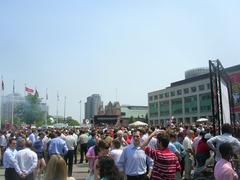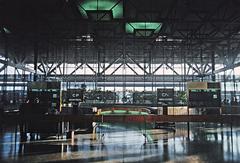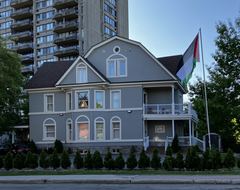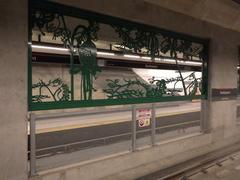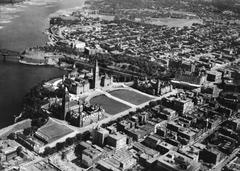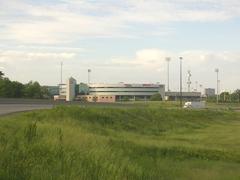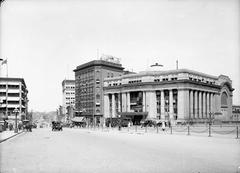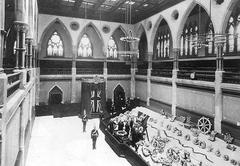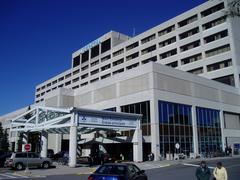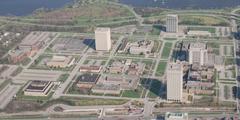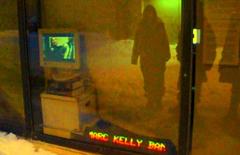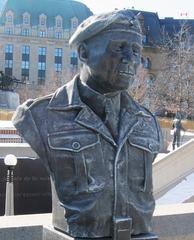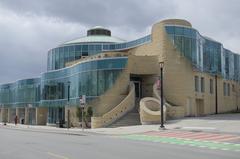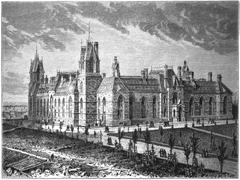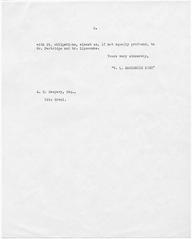Victoria Building Ottawa: Visiting Hours, Tickets, and Tourist Guide
Date: 04/07/2025
Introduction
The Victoria Building, located at 140 Wellington Street in Ottawa, stands as an enduring symbol of Canada’s architectural and political heritage. Nestled directly across from Parliament Hill, this landmark is a striking example of Beaux-Arts Classicism and Art Deco influences, reflecting the evolution of Ottawa from a lumber town to a modern capital. Although public access is limited to its exterior, the building’s historical significance, architectural grandeur, and proximity to major attractions make it a must-see for visitors exploring Ottawa’s Parliamentary Precinct (Parks Canada; Carleton University).
Table of Contents
- Introduction
- Origins and Historical Development
- Architectural Significance
- Key Tenants and National Role
- Heritage Designation and Preservation
- Urban Context and Influence
- Practical Visitor Information
- Exterior and Interior Features
- Nearby Attractions and Walking Tours
- Photography and Visitor Tips
- Accessibility and Visitor Services
- Frequently Asked Questions (FAQ)
- Conclusion
- References & Further Reading
Origins and Historical Development
The Victoria Building was constructed between 1927 and 1928 during a period of rapid growth and modernization in Ottawa (Parks Canada). Designed by John Albert Ewart, a key figure in shaping Ottawa’s early 20th-century skyline, the building was developed by the Wellington Investments Company as one of the city’s first high-rise office blocks. Its location on Wellington Street—directly facing Parliament Hill—underscored Ottawa’s emergence as Canada’s political heart.
The building’s completion marked a turning point for both the city’s urban landscape and federal involvement in local planning, introducing height restrictions and development controls through the Federal District Commission (Parks Canada).
Architectural Significance
The Victoria Building is celebrated for its blend of Beaux-Arts Classicism and Art Deco features (Wikipedia). The structure features:
- Symmetrical limestone façade with strong horizontal and vertical elements
- Tripartite composition (base, column, capital) common in early high-rise commercial design
- Classical detailing, including pilasters, arched entrances, ornate cornices, and decorative stonework
- Art Deco flourishes visible in the streamlined ornamentation and geometric motifs
This combination results in a dignified presence that harmonizes with the surrounding governmental architecture, particularly Parliament Hill. The building’s uncluttered design and honest use of materials were considered innovative for its era, and its height and grandeur remain prominent within Ottawa’s skyline (Carleton University).
Key Tenants and National Role
Over its history, the Victoria Building has served a variety of significant roles:
- Diplomatic Missions: Hosted the first French Embassy (1928–1939) and the Japanese legation (1931)
- Financial Institutions: Temporary home to the Bank of Canada (1935–1938)
- Media Headquarters: Served as the national headquarters of the Canadian Broadcasting Corporation (CBC) from 1938 to 1964, where national radio and television networks were coordinated
- Educational Use: Housed Ashbury College before federal acquisition
- Government Offices: Since 1973, primarily used for parliamentary staff and offices of Members of Parliament and Senators (Wikipedia)
Heritage Designation and Preservation
Designated as a Federal Heritage Building, the Victoria Building is recognized for its historical, architectural, and environmental value (Parks Canada). The government’s stewardship has ensured the preservation of its original footprint and façade, with significant renovations—most recently in 2003—upgrading infrastructure while respecting its architectural integrity.
Urban Context and Influence
The Victoria Building’s presence helped define Wellington Street as Ottawa’s ceremonial and governmental axis. Its construction prompted the city to adopt stricter urban planning controls, ensuring a cohesive and dignified streetscape in front of Parliament Hill. The building’s continued governmental use and proximity to national institutions reinforce its role as a bridge between Ottawa’s commercial and political spheres (living-inottawa.ca).
Practical Visitor Information
Location and Access
- Address: 140 Wellington Street, Ottawa, ON K1A 0A6
- Public Transit: Steps from Parliament Station (O-Train Confederation Line); multiple OC Transpo bus routes
- Parking: Limited street parking; public lots available at World Exchange Plaza and Rideau Centre
Visiting Hours and Tickets
- Public Access: The building is not open for interior tours or public events. There are no tickets or entrance fees to view the exterior.
- Viewing Times: The exterior can be enjoyed from the sidewalk at any time, with optimal lighting in early morning or late afternoon.
Accessibility
- The area around the building is fully wheelchair accessible; curb cuts and smooth sidewalks are present.
- Public washrooms are available nearby at Parliament Hill and ByWard Market (Authentik Canada).
Exterior and Interior Features
Exterior Highlights
- Limestone cladding and rusticated base
- Grand arched entrance with decorative stonework
- Symmetrical window arrangements framed in stone
- Classical pilasters and cornices that reinforce verticality
Interior Description
While public access is restricted, the interior retains original Beaux-Arts details such as marble floors, plaster ceilings, and brass fixtures in the lobby, reflecting the building’s original design intent.
Nearby Attractions and Walking Tours
The Victoria Building is ideally situated for inclusion in a walking tour of Ottawa’s Parliamentary Precinct. Key nearby attractions include:
- Parliament Hill: Guided tours and ceremonial events
- Supreme Court of Canada: Public tours available
- National Gallery of Canada: Renowned art collections
- ByWard Market: Shopping and dining district
- Rideau Canal: UNESCO World Heritage Site for walking, cycling, and skating
Several organizations and tourism websites offer self-guided and guided tours that include the Victoria Building as a historic stop (Ottawa Tourism; GPSmyCity Ottawa Walking Tours).
Photography and Visitor Tips
- Best Vantage Points: Across Wellington Street for full façade views; along the ceremonial boulevard for Parliament Hill context
- Lighting: Golden hour (early morning/late afternoon) enhances limestone details
- Events: Visit during the Canadian Tulip Festival (May) or summer light shows for vibrant photos and lively atmosphere (Waves and Cobblestones)
- Etiquette: Respect government operations—photograph the exterior only and avoid blocking entrances
Accessibility and Visitor Services
- Wheelchair access is excellent throughout the Parliamentary Precinct
- Visitor information: Ottawa Visitor Centre provides maps and assistance nearby
- Food and restrooms: ByWard Market and Sparks Street offer dining and public restrooms
Frequently Asked Questions (FAQ)
Q: Can I tour the interior of the Victoria Building?
A: No, the building is not open to the public for interior tours.
Q: Do I need tickets to visit the Victoria Building?
A: No tickets or entrance fees are required to view the exterior.
Q: Is the Victoria Building wheelchair accessible?
A: The area around the building is fully accessible, though interior access is restricted.
Q: Are guided tours available?
A: While the building itself does not offer tours, many Ottawa walking tours include it as a point of interest.
Q: What are the best times for photography?
A: Early morning and late afternoon provide the best natural light for photos.
Conclusion
The Victoria Building is a cornerstone of Ottawa’s architectural and political legacy. Its stately Beaux-Arts and Art Deco design, storied history as a hub for diplomacy, broadcasting, and governance, and its central location make it a highlight for any visitor exploring Canada’s capital. While interior access is limited, the building’s façade and its relationship to Parliament Hill and nearby landmarks ensure it remains an essential stop on any walking tour of Ottawa’s historic core.
To enhance your visit, plan to explore nearby attractions, participate in seasonal events, and utilize resources like the Audiala app for self-guided tours. For the latest updates, consult official tourism and parliamentary websites.
References & Further Reading
- Parks Canada – Victoria Building Heritage Designation
- Carleton University – Architectural Guide to Ottawa
- living-inottawa.ca – The Evolution of Ottawa: Past, Present, and Future
- Ottawa Tourism – 10 Architectural Wonders in Ottawa
- Wikipedia – Victoria Building (Ottawa)
- GPSmyCity – Ottawa Historical Buildings Walking Tour
- Authentik Canada – Ottawa Tourist Office
- Waves and Cobblestones – Best Ottawa Tours
Explore more:

